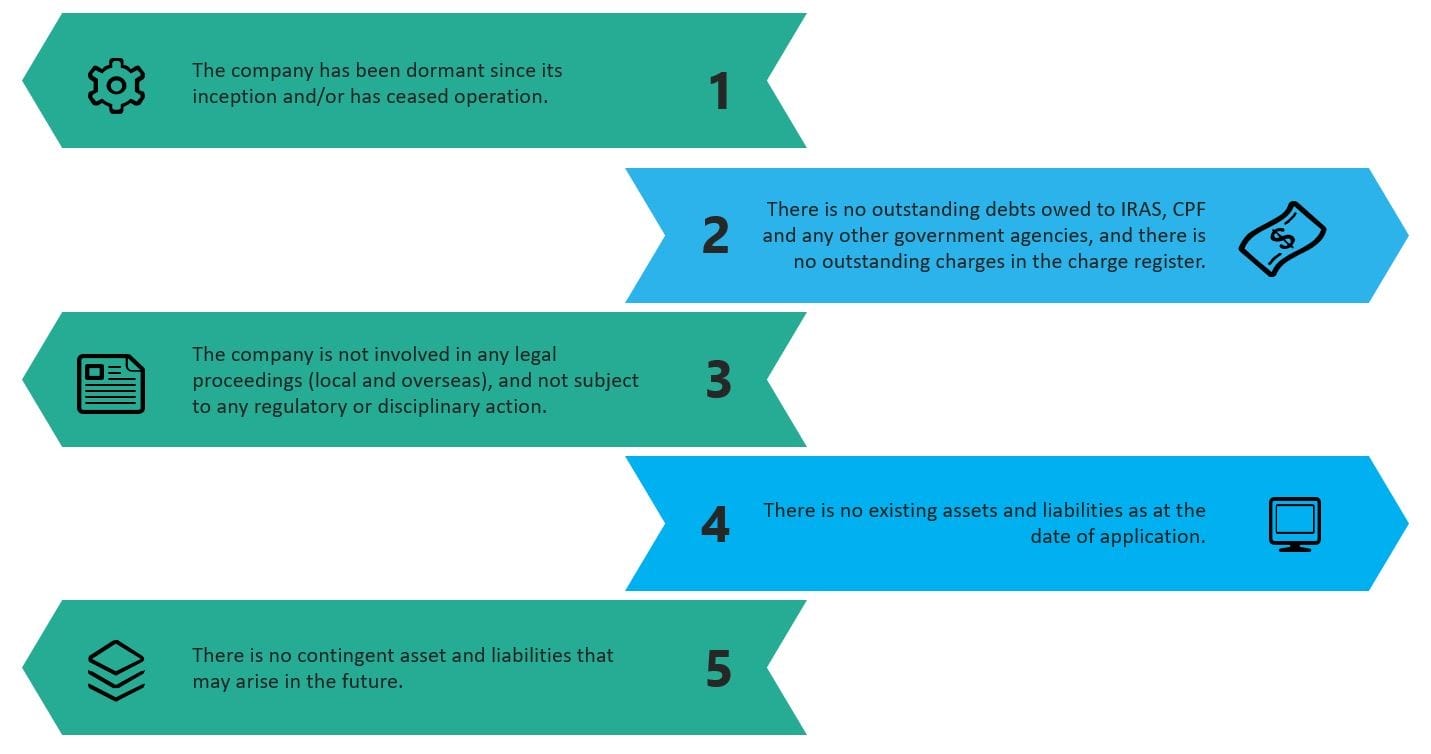Decide between Strike Off and Wind Up
As businesses continue to take a beating from the economic fallout from the COVID-19 crisis, companies that are not viable anymore have two options to close – strike off or wind up. In order to make an informed assessment and decision, business owners have to first know the key differences between striking off and winding up a company. Most importantly, they have to be well aware of the situation their companies are in to make a final call.
Winding Up vs. Striking Off
Winding up simply means closing down a company. Procedurally, closing down a company requires a longer time and it is more formal as compared to striking off. The former involves getting an appointed liquidator to manage the entire liquidation process, which includes realisation and distribution of company’s asset and payment of outstanding debts.
Striking off is, on the other hand, removing a dormant company off the Register. However, there are criteria to meet to qualify for a strike off:

Figure 1: Criteria for a Strike Off
Typically, a company director, secretary or a registered filing agent can be authorised to strike off a company. The Registrar on its own motion may also strike off a company if he has reasons to believe that the business is no longer active.
As compared to winding up, striking off is a more cost efficient means of closing down a company. However, within six years from the date on which the name of the company is struck off, any person who feels aggrieved can still apply to Court to have the name restored on valid justification. As for winding up, aggrieved party cannot apply to Court to reinstate the company once the company has been liquidated.
Objection to and withdrawal from a strike off
A strike off can be objected within 30 days of notice. If the Registrar did not receive any objection within the stipulated timeframe, he will publish a notice of intention for striking off in the Government Gazette. Thereafter, an objection can still be made within 60 days of notice. If there is still no objections raised, the Registrar will proceed to publish an official notice in the Government Gazette informing that the company has been struck off or no longer exists.
Should a company like to withdraw from a strike off application, it can do so at any point of time before the company’s name is removed from the Register. A withdrawal can be made through BizFile without any fee imposed. Once the withdrawal application is received, the Registrar will get in touch with the company and announce on ACRA’s website about the application for a withdrawal.
How we can help
At RSM Stone Forest, we provide professional advice and assistance to assess which is the best mode of closure for your business, whilst ensuring the company and its stakeholders’ interests are protected. We have the expertise to guide you through the entire closing process–from the beginning to the completion of the closure of your company–with the following services:
- Assess the most effective method of closure
- Draft final set of accounts for closure
- Obtain necessary tax clearance
- Prepare corporate documents
- Submit application to the various authorities, liaison work, etc.
To find out more and how we can further assist you, please consult our specialists.